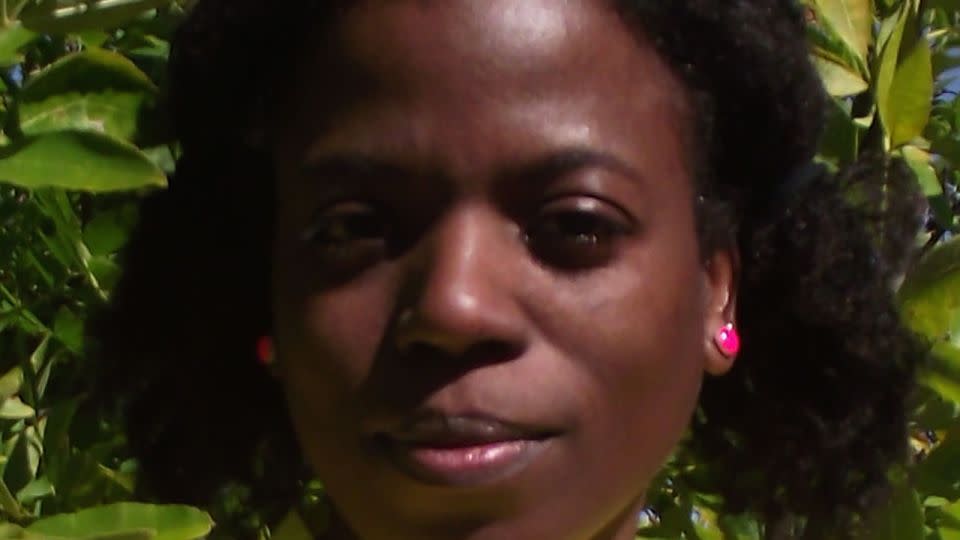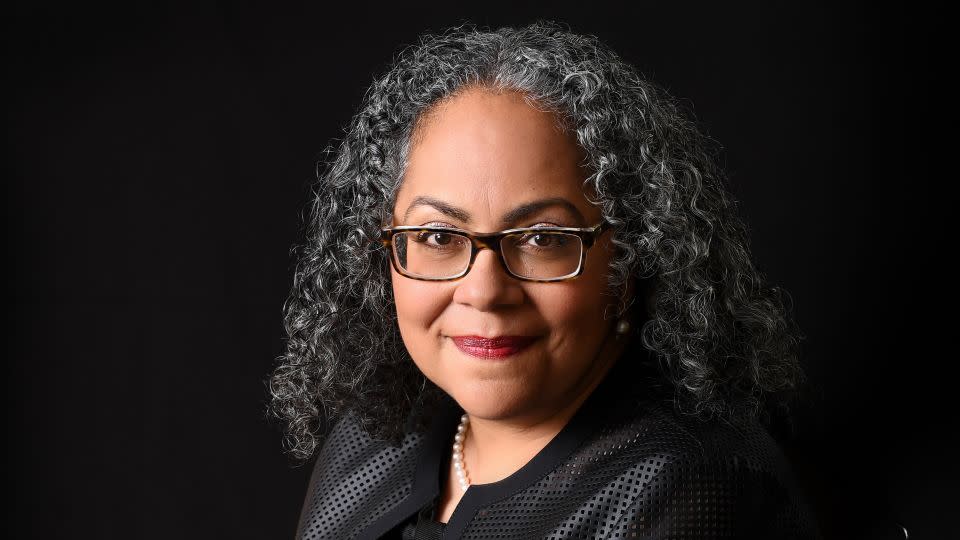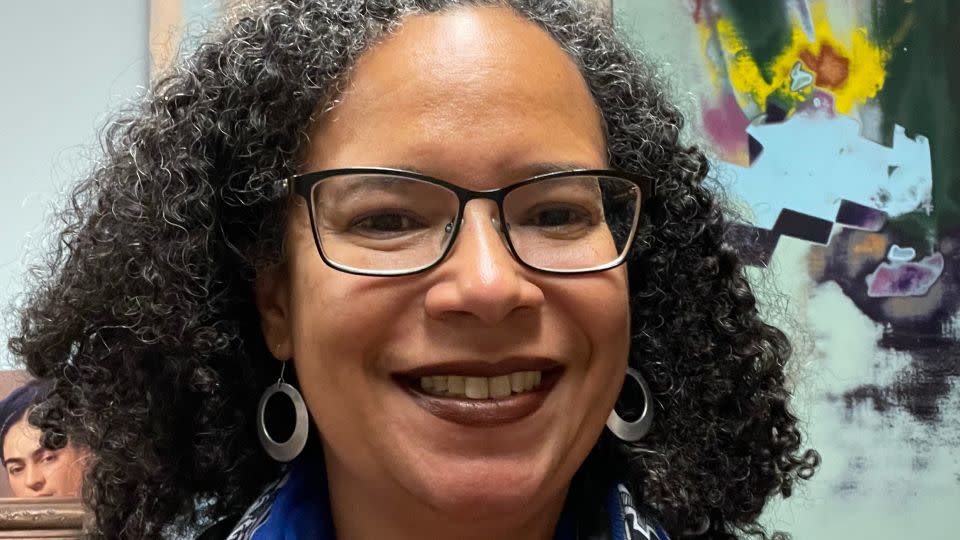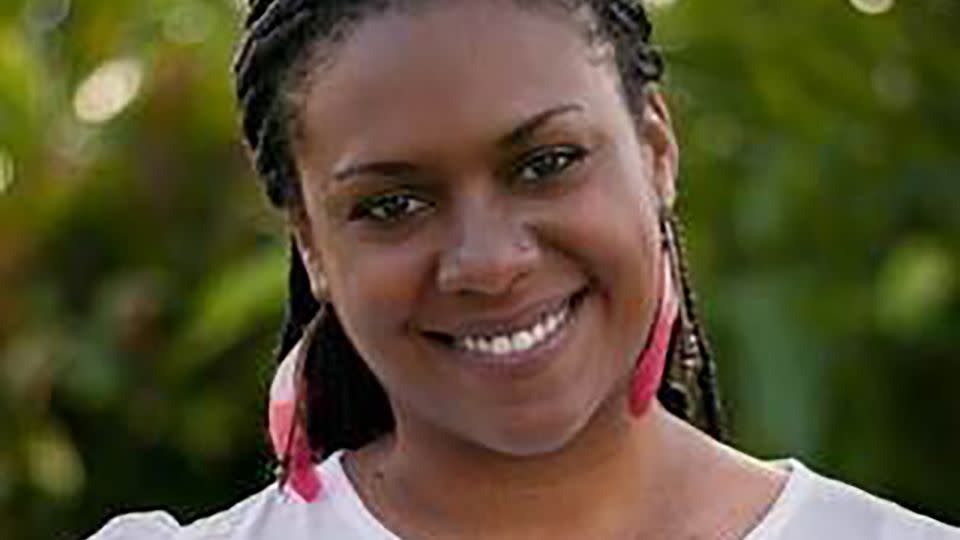Opinion: The next Census could reveal a very different America
If you’re a self-identified Hispanic or Latino, or a Middle Eastern or North African (MENA) person in the US, chances are that every 10 years answering the Census gives you pause. More specifically, you might have been challenged to answer the race question, which, at least until the last Census in 2020, included five categories: White, Black or African American, American Indian or Alaska Native, Asian and Hawaiian or Pacific Islander.
According to 2020 Census Bureau data, of the 54.6 million Americans who reported that they identify as Hispanic or Latino, 43.6% either did not respond to the race question or responded by selecting the “Some Other Race” option, a category that’s not federally recognized. As for the 3.5 million MENA people in the country, they are are classified as White – a racial category many don’t see themselves represented by.
Now, the standards for maintaining, collecting and presenting data on race and ethnicity (Statistical Policy Directive No. 15) in the federal government, as set by the Office of Management and Budget (OMB), are about to undergo the biggest change in almost 30 years after a revision announced late last month. The two most controversial changes are the introduction of a combined question for race and ethnicity and the addition of two categories — MENA and Hispanic or Latino — as possible answers to that single question. Until this change, people could select “Hispanic or Latino” as an ethnicity but couldn’t designate it as their race.
The announcement has been embraced by some and criticized by others within and outside the affected communities. It has the potential to significantly change how the population of the US is viewed and to help shape government policy in new ways.
These standards not only apply to the decennial census but to the American Community Survey and all federal agencies’ surveys and administrative forms. The OMB said the Office of the US Chief Statistician is leading these efforts “to help agencies collect and release data under these updated standards as quickly as possible.”
CNN Opinion asked a range of scholars, thinkers and activists to weigh in on the announcement. These are their takes. The opinions expressed are those of the authors:
Robyn Autry: The inescapably social character of the OMB racial categories
There’s no getting racial labels right, at least not in any technical or biological sense. Instead, we try to get their political significance right and to capture how these terms are actually used and lived. It has never felt right to say that an Arab American is white, or that some people must belong to racial and ethnic groups. Our feelings about these labels and identities, including who ought to claim them and using what criteria, change with time because race is “a human-invented, shorthand term” that never fully corresponds to differences we think we see like skin tone and hair texture. Categories are revised, not because a population has been discovered or lost, but because of pressure to describe it better.

These distinctions are impossible to get right but too much of American society is organized around racial differences to stop counting, despite its imprecision and troubled history. Even in countries like France where such data is not collected, entrenched racial disparities persist but are harder to mobilize around.
Many countries have fretted endlessly about how to get the numbers right. In the book “National Colors,” sociologist Mara Loveman tracks shifts in the public thinking about how and whether to collect racial data in Latin America with the effect of making some groups, namely those with African and indigenous ancestry, appear more or less visible.
The OMB changes – adding MENA and Hispanic or Latino as racial categories and combining the race and ethnicity question – mean that the other categories will be impacted, namely the White population will again appear to be in freefall.
Others worry that Black Arabs may be undercounted or feel torn about which box they are meant to tick, or how many. This is also true for Armenian-Americans whose label is not listed as one of the MENA sub-categories, although they can write it in. But we can go a step further and wonder how we will agitate over the criteria used to self-select into the MENA category in the first place.
What does it mean to “self-identify” in this vast context with global reverberations? Is it really up to us as individuals? Will we scrutinize who checks the MENA box and label them frauds and impostors? Ultimately, we bring all of society to bear when we tick those boxes, recognizing that our choice is influenced as much by how we see ourselves as how others do. That is the inescapably social character of these categories.
Robyn Autry is a sociologist and director of the Allbritton Center for the Study of Public Life at Wesleyan University. She is the author of “Desegregating the Past: The Public Life of Memory in the US and South Africa.”
Arturo Vargas: The Census will finally ask the right questions on race and ethnicity
The 2030 Census will see a combined question on race and ethnicity — a welcome and overdue development that marks a considerable shift from the 2020 Census.

In the last census, 8% of Latinos left the race question unanswered, and 35% indicated they were of “Some Other Race.” Nearly 27 million Latinos did not see themselves in the five race categories recognized under federal data collection standards. As a result, “Some Other Race” became the second-largest race category.
In previous counts, many Latinos were tallied as White, a category with which most did not identify. To mitigate this issue, the Census Bureau conducted research to identify a solution before 2020. The findings revealed a single question combining race and ethnicity led to better data on all respondents, especially Latinos.
The National Association of Latino Elected and Appointed Officials Educational Fund supported this combined question approach. However, to make this modification, the OMB needed to revise its data standards, a change that did not move forward under President Donald Trump.
That all changed in late March when OMB announced that — after picking up where it left off in 2017 and a year-long review that included extensive public input — it is revising how it asks about race and ethnicity by using a combined question approach.
While we applaud this progress, key stakeholders, including some Afro Latino researchers and community leaders, believe a combined question could result in data loss on respondents identifying as both Latino and Black. And while there is research suggesting otherwise, these concerns warrant consideration and should be addressed by the government as it implements this new approach.
Although this approach must be done correctly to fully account for our racial and ethnic diversity, with this new path forward, we now have the opportunity for a better way to collect data on Latinos.
Arturo Vargas is the Chief Executive Officer of the National Association of Latino Elected and Appointed Officials (NALEO) Educational Fund, a national non-profit, non-partisan organization working to promote the full participation of Latinos in civic life — and the CEO of NALEO, a national membership organization of Latino policymakers and their supporters. He’s the chair of the 2030 Census Advisory Committee.
Tanya Katerí Hernández: For Latinos, race and ethnicity are not the same thing
The recent OMB decision to list Latino ethnicity as commensurate with the existing racial categories on federal government data collection forms like the Census is mistakenly rooted in the idea that Latin American mestizo/mixed-race culture conflicts with having a racial identity. Hence the notion that Latinos are too mixed to embrace race.

The reality of actual Latin American census taking gives the lie to the OMB presumption that Latin American cultures create Latino resistance to racial identity.
It also illuminates the harm to Afro Latinos of the new OMB standard to have Latino treated as equivalent to racial categories rather than as a separate ethnicity question that would enable Latinos to indicate they are both ethnically Latino and also have a racial identity.
In Latin America, many residents self-identify as White, Black, Asian and Indigenous on their census forms without any angst or confusion about what the racial categories mean. Nor do they flock to the racial ambiguity of a “Some Other Race” box fill-in.
Black social justice activists in the region have long noted that the availability of census racial data facilitates the lobbying for racial equality government policies. This is why the Inter-American Commission on Human Rights has noted that when governments hinder the collection of statistical racial data it “stands in the way of the progressive realization of their rights and inclusion in public policies.”
The disinclination some non-Black Latinos in the United States have with acknowledging the relevance of their racial appearance is thus not a Latino culturally-determined discomfort with racial categories, but rather a reflection of US racial politics. For some non-Black Latinos, it is undesirable to check a race box and thereby acknowledge the relevance of racial difference, disparities, harm and privilege that exist within US Latino ethnicity.
Importantly, there are other ways to address the complexity of Latino identity that do not block the ability to collect meaningful racial data. The scholars who make up the AfroLatino Coalition provided the OMB with other worthy alternatives to consider, which they ignored.
Now the US Census Bureau compounds that error by appointing a 2030 Census Advisory Committee devoid of any Afro Latino experts. These combined failures now risk having systemic racism rendered invisible while Latino decision-makers continue to deny Afro Latinos access. The OMB reform needs further reform.
Tanya Katerí Hernández, is the Archibald R. Murray Professor of Law at Fordham Law School, and author of “Racial Innocence: Unmasking Latino Anti-Black Bias and the Struggle for Equality.”
Justin Gest: Census forms make one nation divisible
On March 3, 2015, the US Census Bureau published a report projecting that by 2044, the United States would become a “majority-minority” country — that is, a country where immigration and fertility rates lead America’s ethnic and racial minorities to outnumber the “White” majority.

One interpretation of US politics ever since might divide the country between those unfazed by the prospect of this demographic milestone, and those who are deeply disconcerted.
However, the milestone relies on a narrow definition of “White” people that excludes Latinos, the majority of whom self-identify as white on US Census surveys.
In many ways, this explains why the politics around revising the survey are so fraught. If the Census treats being “Latino” as mutually exclusive with being “White,” it reinforces the logic behind a “majority minority” milestone — which has empowered some Latino activists but veils the way many Latinos gravitate toward whiteness.
And yet, more than White or Black adults, Latinos say that the Census’ present metrics do not represent them either.
People from Latin America and the Caribbean are often mestizo, or of mixed Indigenous, European and African roots — which are just not captured by Census categories. Asked to freely describe their race or origin, most Latinos say they are Hispanic, Latino or Latinx (28%) or refer to their country or region of their ancestors (28%). Still, another 11% of Latinos primarily identify as “American” and 9% primarily identify as “White.”
Treating Latinos as a “race” is just as problematic as the artificial grouping of “Asian” people, “Black” people and “White” people. We would do better by embracing the complexity of the American population on Census forms that offer long menus that record all Americans’ countries of ancestry and how these diverse origins intersect with religion, sexuality, nativity and the social constructs of race.
The results would reveal how America is a cross-section of the world, an immigrant-origin nation that no simplistic categories — or “majority minority” dichotomy — should divide.
Justin Gest is an associate professor at George Mason University’s Schar School of Policy and Government. He is the author of six books, including “Majority Minority” and “The New Minority: White Working Class Politics in an Age of Immigration and Inequality.”
Thomas Simsarian Dolan: The necessary corrections the White House will have to entrust MENA people to make
While the new “MENA” racial category adopted by the OMB is a step in the right direction, its definitions echo a century of the federal government’s struggles to define the region and accurately classify the very MENA peoples it claims to represent.

When Arabs, Armenians, and smaller numbers of Sephardic Jews, Kurds, and Turks came to the US and Latin America at the end of the nineteenth century, they were almost universally classified as “Turks” since they came from the Ottoman Empire – “Turkey in Asia” – though very few were actually Turkish.
After 1900, the Census added “Syrian,” but this term was often used to refer to an ethnic grab bag of “Levantine” identities, from a historic region spanning from present-day Turkey to Iraq. Though largely discredited after the Holocaust, eugenicists like the American Madison Grant and Nazi Hans Günther racialized Arabs, Armenians and Jews together, which underwrote housing discrimination, anti-immigration and naturalization laws, surveillance and deportation across the Atlantic World.
After World War II, the emergence of newly independent nations and Arab-Israeli wars shifted common sense away from a pluralist, multiethnic region toward one stereotyped as “Arab” and/or “Muslim.”
Still, definitions of the “Middle East” varied wildly: in 1944, the US Department of State defined the “Middle East” as spanning from Iran to Burma; in 1948, it stopped using “Middle East” in favor of “Near East;” and in 1974, redefined the “Near East” to include some Arab League nations, Iran, but not Turkey and Sudan.
Contrarily, the Immigration and Nationality Act of 1965 defined the region as stretching from Morocco to Bangladesh, a logic reiterated in George W. Bush’s “Greater Middle East Initiative,” which included (and targeted) peoples from the Caucasus, and parts of Central and South Asia.
The Census also participated in these syllogisms — alternately labeling the region as “White” or “Asian,” or even defaulting to classifying multiple ethnicities as “Arab.” When it did disaggregate “Middle Easterners,” however, it consistently, and rightly, grouped Arabs, Armenians and Iranians together.
That’s why the specific exclusion of Armenians, as well as multiple “Black” Arab groups is so inexplicable. Necessary corrections will require that the White House entrust MENA peoples to be experts in our own experiences, and rectify policies that have historically erased us.
Thomas Simsarian Dolan is currently an American Council of Learned Societies Emerging Voices Fellow in Middle Eastern and South Asian Studies at Emory University, after completing a year as a Fulbright US Teaching Scholar at American University in Cairo.
Nancy López and Alan Aja: Asking about Latinos’ ethnicity and race in one question contributes to myth of a post-racial America
The Mendez, et al vs. Westminster (1947) US Supreme Court decision, preceding Brown v. Board of Education (1954), highlighted the complexity of race within the Latinx community. Silvia Mendez, born to Mexican and Puerto Rican parents, was not allowed to enroll in a California school because she was “too dark.” But her lighter-skinned cousins were told they could enroll at the school.

The Mendez family’s experience underscores that Latinx people have never been treated as a racial monolith. “Street race” or the race strangers perceive us to be based on a conglomeration of physical characteristics, including skin color, facial features and hair texture, shapes experiences with discrimination and access to opportunity.
Yet the OMB released new standards for collecting data that treat Hispanic/Latino ethnicity/cultural heritage as a co-equal category with race/visual status. The primary rationale for this change is that large numbers of Latinxs select “Some Other Race,” perhaps because the Census has never tested categories like “mestizo” or “Brown.”

It is important to note that the revised OMB guidelines do not prohibit the collection of additional data points, including separate questions on race as a visual status and ethnicity as a social status related to cultural heritage.
Research shows that separate race and ethnicity questions allow us to learn that Black Hispanic/Latinxs have higher levels of education than other Latinxs, especially White-identified Latinxs, but do not experience the same income and earnings. Black Latinxs experience higher unemployment rates, are less likely to own a home, report lower home values, are subject to worse health outcomes and live in more segregated neighborhoods compared to other Latinxs.
These inequities would go unnoticed if race and ethnicity had been combined in one question. In fact, a recent report on Black Latinxs utilized 2019 data because more recent data from 2021 merged origins with race, rendering it unusable.
Asking about race/visual status and ethnicity/cultural heritage in the same question results in statistical gaslighting, promoting the myth of a post-racial America. How else will we know if we have eradicated the color line in social outcomes? Making Hispanic/Latino ethnicity a co-equal category with race is not the answer.
Nancy López is a professor in the Department of Sociology & Criminology at The University of New Mexico. Alan Aja is professor & chair in the Department of Puerto Rican & Latinx Studies at Brooklyn College at The City University of New York.
Jesenia De Moya Correa: A Latino racial and ethnic category is the same as a Latino voting bloc — a fiasco
Racial identity is varied and nuanced among Latinos, so combining race and ethnicity for the group could tamper with the collecting of the federal data that journalists use to surface the issues that affect them. Limited access to disaggregated data creates barriers to reporting on the racial disparities that impact Latinos’ health, income and education, just to name a few.

Latinos experience segregation and racism in the US and elsewhere.
Whether pardos, mulatos, trigueños or mestizos, being overlooked by design isn’t new to Afro Latinos in the US. We’ve all learned about government policies and laws that discriminate against Latinos when it comes to buying a house, living in a certain neighborhood, attending a specific school or having access to healthy, green spaces.
Using Census data, a report out of UCLA’s Latino Policy and Politics Institute examined Afro Latinos in the US, including the group’s unique trends in education, employment, and homeownership compared to non-Black Latinos in the country. The report, published last year, highlighted the importance of racial status in bringing visibility to the inequities that affect Latino communities. Some wealth experts highlight the importance and need for more disaggregated data to address economic disparities among Latino subgroups.
In a society obsessed with binary narratives, the journalists dedicated to these communities had already found themselves navigating a sea of data sets in favor of presenting a fairer picture of the Latino experiences. With these changes, journalists may now find themselves relying on flawed governmental data for their news reports, which could lead to deeper marginalization and stereotypes.
Combining the federal standards on race and ethnicity into one single category will oversimplify the Latino experiences and unfortunately most journalists, marketers and media professionals will go along with it.
Jesenia De Moya Correa is a journalist specializing in science, health and environmental issues affecting Latinos and their connections in the Americas. She leads the Latino Media Initiative at the City University of New York’s Center for Community Media at the Craig Newmark Graduate School of Journalism.
Rima Meroueh: The addition of a MENA racial category extends equal opportunities for Arab Americans
The OMB’s addition of a “Middle Eastern or North African (MENA) reporting category is a long-fought victory that is overdue. Since the passage of the Civil Rights Act of 1964 and the Voting Rights Act of 1965, respectively, the federal government has used data on race and ethnicity to ensure that minority populations have equal opportunity to benefit from federal programs and services and are protected from discrimination.

However, inaccurate classification has negatively impacted the ability for people from the Middle East or North Africa to benefit from these programs and protections. Research has demonstrated how the lack of a racial and ethnic identifier underminesthe assessment of health disparities in Arab and MENA populations. This is because since 1977, the OMB has required all federal agencies to report data on individuals from MENA countries under “White” populations.
This was the result of a regulation issued by the OMB in 1977, under the authority Congress granted them to coordinate the federal statistical system, including how agencies collect and report data on race and ethnicity. By combining MENA and White data into one racial category, the federal government has misrepresented the realities not only Arab Americans face, but all racial and ethnic populations across the United States.
With the recent addition of a MENA category, Arab Americans will be counted and therefore seen in the data across all federal agencies, including the decennial US Census. Our government can finally conduct an accurate analysis of racial and ethnic disparities and/or discrimination, and analyze whether individuals from the MENA region, including Arab Americans, have had our rights infringed upon. The addition has the potential of also addressing and tackling disparities in health care, business, education, and more.
Adding a MENA category will extend to Arab Americans and the broader MENA community the same opportunities to engage in the civic and political process as all citizens, giving us a voice in the politics of our nation. Most importantly, this change means recognition, self-determination and power for a community whose voices and contributions have been silenced for too long.
Rima Meroueh is the Director of the National Network for Arab American Communities, a national institution of ACCESS, the largest Arab American community nonprofit in the United States offering a wide range of social, economic, health and educational services to a diverse population.
Bárbara Abadía-Rexach: Adding Black to all my identities is a political act of resistance
As a Black Puerto Rican woman and anthropologist, I aim to explore ways to critically and politically challenge the racial categories imposed on us Latinos in the country and to take into account other societal factors that make our experiences as non-White individuals in the US particularly unique and diverse.

I was born and raised in a country that, for political purposes, is not even a nation. Puerto Rico is an unincorporated territory of the United States — a US colony. In Puerto Rico, I learned that I am Puerto Rican, of course. But I was also taught that us Puerto Ricans are a mixture of three races: Indigenous Taínos, White Spaniards and Black Africans. However, in that same archipelago that appears to celebrate mestizaje, I have survived anti-Black racism.
Outside of Puerto Rico, my blackness distances me from my Puerto Rican identity. “Where are you from?” is a recurring question. Therefore, I self-identify as a Black Puerto Rican woman, a Black Latina/Afro Latina, a Black Antillean and a Black Caribbean. Adding Black to all my identities is a political act of resistance to challenge societal notions of what a Puerto Rican or Latina is, should be or should look like.
The conversations and initiatives that have taken place as a result of the International Decade for People of African Descent (2015-2024), proclaimed by the United Nations, confirm that racial inequities are not just an admitted problem in the US that affects African Americans. While Latino populations, as an ethnic group, suffer inequality and xenophobia from being racialized as non-white, visibly Black Latinos additionally face anti-Black racism in this country.
Although the racial categories used in the US are inappropriate for Latino communities, imposing Latino as a racial category will not yield accurate data on the diversity of that ethnic group. And beyond the data and statistics, it will place Black Latino people in greater precariousness.
Latino is not a racial category and to ignore race, despite being a problematic social construct, is to deny the existence of human beings who are treated differently. When the treatment that Black Latinos receive is finally humanized, racial or ethnic categories will not be necessary.
Bárbara I. Abadía-Rexach is an anthropologist and an assistant professor at the Department of Latina/Latino Studies at San Francisco State University. She’s the author of the book “Musicalizando la Raza: La racialización en Puerto Rico a través de la música.”
For more CNN news and newsletters create an account at CNN.com

 Yahoo News
Yahoo News 
